 |
King of Chemicals Manufacturers |
Specifications, Properties, Uses, SDS of Glycerin or Glycerol USP BP Ph Eur IP EP JP Reagent FCC Food Grade Manufacturer Supplier Exporter Wholesale & Small Packs, CAS Number 56-81-5. |
|
| King of Chemicals has several associated companies having accreditations like cGMP, GLP - FDA Approved Good Manufacturing Practice and Good Laboratory Practice of WHO standard, ISO-9001, ISO-14001, ISO/IEC 17025, ISO ISO-45000, HACCP, FSSC 220000, FSSAI, "REACH" Registered, Kosher & Halal Certified. e-CTD and DMF support can be made available if needed. We offer USP NF BP Ph Eur EP IP JP Analytical Reagent FCC Food Grade Chemicals & Nutraceuticals. | |
        |
|
Muby Chem Pvt. Ltd. is a several decades old group of companies, engaged in manufacturing, supplying, distributing, wholesale supplies of Glycerin or Glycerol USP BP Ph Eur IP EP Reagent FCC Food Grade for actual users, including retail or small pack supplies for research and development work.
We supply fine and speciality chemicals, pharmaceutical excipients, mineral fortifiers in chemically pure, analytical reagent grade, IP BP USP Ph Eur EP JP and other pharmaceutical grade monograph including FCC Food grade chemicals and Nutraceuticals at best prices. We and/or our associated units have all the facilities to supply as per cGMP standard observing good manufacturing practice and good laboratory practice. We can assure low microbial count and also offer a test certificate for the same. We maintain warehouses across USA, India, and UAE. Our group exports to USA, Canada, Mexico, Argentina, Brazil, Chile, Korea, Malaysia, Thailand, Indonesia, Europe, and several other parts of the world. We supply in wholesale container loads to small pack of few grams. Solid products may be specified for it size and shape as desired by the buyer.


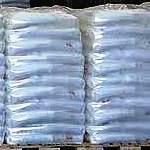
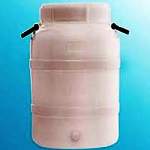
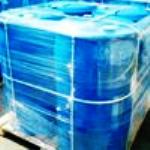
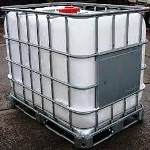
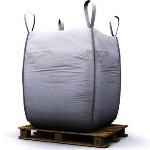
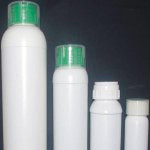
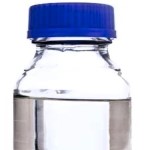
Glycerin or Glycerol CAS Number 56-81-5
For Properties Specifications Uses of Glycerin or Glycerol Click Properties, Specifications, Uses, Price, Process of Glycerin or Glycerol Manufacturer.
For For SDS MSDS Sheet of Glycerin or Glycerol Click SDS Safety Data Sheet MSDS Sheet of Glycerin or Glycerol Manufacturer.
The Properties, Specifications, Monograph and Uses of Glycerin or Glycerol:
Specifications of Glycerin USP Grade:
C3H8O3 --- 92.10
1,2,3-Propanetriol.
Glycerol --- CAS 56-81-5.
Glycerin contains not less than 99.0 percent and not more than 101.0 percent of C3H8O3, calculated on the anhydrous basis.
Packaging and storage: Preserve in tight containers.
Color: Its color, when viewed downward against a white surface in a 50-mL color-comparison tube, is not darker than the color of a standard made by diluting 0.40 mL of ferric chloride CS with water to 50 mL and similarly viewed in a color-comparison tube of approximately the same diameter and color as that containing the Glycerin.
Identification:
A: Infrared Absorption.
B: Prepare the Test solution and the Resolution solution as directed in the test for Limit of diethylene glycol and related compounds. Dilute a portion of each solution, stepwise if necessary, with water to obtain the Diluted test solution and the Diluted resolution solution having concentrations of about 0.1 mg per mL. Proceed as directed for Procedure in the test for Limit of diethylene glycol and related compounds: the retention time of the glycerin peak in the chromatogram of the Diluted test solution corresponds to that obtained in the chromatogram of the Diluted resolution solution.
Specific gravity: not less than 1.249.
Residue on ignition: Heat 50 g in an open, shallow 100-mL porcelain dish until it ignites, and allow it to burn without further application of heat in a place free from drafts. Cool, moisten the residue with 0.5 mL of sulfuric acid, and ignite to constant weight: the weight of the residue does not exceed 5 mg (0.01%).
Water: not more than 5.0%.
Chloride: A 7.0-g portion shows no more chloride than corresponds to 0.10 mL of 0.020 N hydrochloric acid (0.001%).
Sulfate: A 10-g portion shows no more sulfate than corresponds to 0.20 mL of 0.020 N sulfuric acid (about 0.002%).
Heavy metals: Mix 4.0 g with 2 mL of 0.1 N hydrochloric acid, and dilute with water to 25 mL: the limit is 5 micro-gm per g.
Limit of chlorinated compounds: Accurately weigh 5 g of Glycerin into a dry, round-bottom, 100-mL flask, add 15 mL of morpholine, and connect the flask by a ground joint to a reflux condenser. Reflux gently for 3 hours. Rinse the condenser with 10 mL of water, receiving the washing in the flask, and cautiously acidify with nitric acid. Transfer the solution to a suitable comparison tube, add 0.50 mL of silver nitrate, dilute with water to 50.0 mL, and mix: the turbidity is not greater than that of a blank to which 0.20 mL of 0.020 N hydrochloric acid has been added, the refluxing being omitted (0.003% of Cl).
Fatty acids and esters: Mix 50 g of Glycerin with 50 mL of freshly boiled water and 5 mL of 0.5 N sodium hydroxide, boil the mixture for 5 minutes, cool, add PhPh, and titrate the excess alkali with 0.5 N hydrochloric acid VS. Perform a blank determination: not more than 1 mL of 0.5 N sodium hydroxide is consumed.
Limit of diethylene glycol and related compounds:
Resolution solution: Dissolve accurately weighed quantities of diethylene glycol and USP Glycerin in water, and dilute quantitatively, and stepwise if necessary, with water to obtain a solution having a known concentration of about 0.5 mg of each per mL.
Standard solution: Dissolve an accurately weighed quantity of diethylene glycol in water, and dilute quantitatively, and stepwise if necessary, with water to obtain a solution having a known concentration of about 0.05 mg per mL.
Test solution: Transfer 5 g of Glycerin, accurately weighed, to a 100-mL volumetric flask, dissolve in and dilute with water to volume, and mix.
Chromatographic system: The gas chromatograph is equipped with a flame-ionization detector, a 0.53-mm × 30-m fused-silica analytical column coated with 3.0- micro-m G43 stationary phase, and an inlet liner having an inverted cup or spiral structure. The chromatograph is programmed as follows. Initially, the column temperature is equilibrated at 100 until the time of injection, is increased at a rate of 7.5C per minute to 220C and is maintained at 220C for 4 minutes. The injection port temperature is maintained at 220C, and the detector temperature is maintained at 250C. The carrier gas is helium. The split flow ratio is about 10:1, and the linear flow is maintained at about 38 cm per second. Chromatograph the Resolution solution and record the peak responses as directed for Procedure: the resolution, R, between diethylene glycol and glycerin is not less than 7.0. Chromatograph the Standard solution and record the peak responses as directed for Procedure: the relative standard deviation for replicate injections is not more than 15%.
Procedure: Separately inject equal volumes (about 0.5 microL) of the Standard solution and the Test solution into the chromatograph, record the chromatograms, and measure the responses for all the peaks. Calculate the percentage of diethylene glycol in the portion of Glycerin taken by the formula:
100(CS/CU)(rU/rS)
in which CS is the concentration, in mg per mL, of diethylene glycol in the Standard solution; CU is the concentration, in mg per mL, of Glycerin in the Test solution; and rU and rS are the peak responses for diethylene glycol obtained from the Test solution and the Standard solution, respectively: not more than 0.1% is found. Calculate the percentage of each other impurity, excluding any solvent peaks, in the portion of Glycerin taken by the formula:
100(ri / rs)
in which ri is the peak response of each individual impurity obtained from the Test solution; and rs is the sum of the responses of all the peaks obtained from the Test solution: not more than 0.1% of any individual impurity, excluding diethylene glycol, is found; and not more than 1.0% of total impurities, including diethylene glycol, is found.
Specifications of Glycerol (85 per cent) BP Ph Eur Grade:
DEFINITION
Aqueous solution of propane-1,2,3-triol.
Content: 83.5 per cent m/m to 88.5 per cent m/m of propane-1,2,3-triol (C3H8O3; Mr 92.1).
CHARACTERS
Aspect: syrupy liquid, unctuous to the touch, colourless or almost colourless, clear, very hygroscopic.
Solubility: Miscible with water and with ethanol (96 per cent), slightly soluble in acetone, practically insoluble in fatty oils and in essential oils.
IDENTIFICATION
First identification: A, B.
Second identification: A, C, D
A. Refractive index.
B. Infrared absorption spectrophotometry. Comparison Ph. Eur. reference spectrum of glycerol (85 per cent).
C. Mix 1 mL with 0.5 mL of nitric acid. Superimpose 0.5 mL of potassium dichromate solution. A blue ring develops at the interface of the liquids. Within 10 min, the blue colour does not diffuse into the lower layer.
D. Heat 1 mL with 2 g of potassium hydrogen sulfate in an evaporating dish. Vapours (acrolein) are evolved which blacken filter paper impregnated with alkaline potassium tetraiodomercurate solution.
TESTS
Solution S: Dilute 117.6 g to 200.0 mL with carbon dioxide-free water.
Appearance of solution: Solution S is clear. Dilute 10 mL of solution S to 25 mL with water. The solution is colourless.
Acidity or alkalinity: To 50 mL of solution S add 0.5 mL of PhPh solution. The solution is colourless. Not more than 0.2 mL of 0.1 M sodium hydroxide is required to change the colour of the indicator to pink.
Refractive index: 1.449 to 1.455.
Aldehydes: Maximum 10 ppm.
Place 7.5 mL of solution S in a ground-glass-stoppered flask and add 7.5 mL of water and 1.0 ;mL of decolorised pararosaniline solution. Close the flask and allow to stand for 1 h at a temperature of 25 ± 1C. The absorbance of the solution measured at 552 nm is not greater than that of a standard prepared at the same time and in the same manner using 7.5 mL of formaldehyde standard solution (5 ppm CH2O) Rand 7.5 mL of water. The test is not valid unless the standard is pink.
Esters: Add 10.0 mL of 0.1 M sodium hydroxide to the final solution obtained in the test for acidity or alkalinity. Boil under a reflux condenser for 5 min. Cool. Add 0.5 mL of PhPh solution and titrate with0.1 M hydrochloric acid. Not less than 8.0 mL of 0.1 M hydrochloric acid is required to change the colour of the indicator.
Impurity A and related substances: To pass the test by Gas chromatography.
Limits:
— impurity A: not more than the area of the corresponding peak in the chromatogram obtained with reference solution (c) (0.1 per cent);
— any other impurity with a retention time less than the retention time of glycerol: not more than the area of the peak due to impurity A in the chromatogram obtained with reference solution (c) (0.1 per cent);
— total of all impurities with retention times greater than the retention time of glycerol: not more than 5 times the area of the peak due to impurity A in the chromatogram obtained with reference solution (c) (0.5 per cent);
— disregard limit: 0.05 times the area of the peak due to impurity A in the chromatogram obtained with reference solution (e) (0.05 per cent).
Halogenated compounds: Maximum 30 ppm.
Sugars: To 10 mL of solution S add 1 mL of dilute sulfuric acid and heat on a water-bath for 5 minnutes. Add 3 mL of carbonate-free dilute sodium hydroxide solution (prepared by the method described for carbonate-free1 M sodium hydroxide), mix and add dropwise 1 mL of freshly prepared copper sulfate solution R. The solution is clear and blue. Continue heating on the water-bath for 5 min. The solution remains blue and no precipitate is formed.
Chlorides: Maximum 10 ppm.
Water: 12.0 per cent to 16.0 per cent, determined on 0.200 g.
Sulfated ash: Maximum 0.01 per cent, determined on 5.0 g after heating to boiling and ignition.
ASSAY: Thoroughly mix 0.075 g with 45 mL of water. Add 25.0 mL of a mixture of 1 volume of 0.1 M sulfuric acid and 20 volumes of 0.1 M sodium periodate. Allow to stand protected from light for 15 min. Add 5.0 mL of a 500 g/L solution of ethylene glycol and allow to stand protected from light for 20 min. Using 0.5 mL of PhPh solution as indicator, titrate with 0.1 M sodium hydroxide. Carry out a blank titration.
1 mL of 0.1 M sodium hydroxide is equivalent to 9.21 of C3H8O3.
Glycerol or Glycerin or Glycerine is also offered as per EP IP JP grade monograph.
Specifications of Glycerol Analytical Reagent Grade :
1,2,3-Propanetriol
CH2OHCHOHCH2OH --- Formula Weight 92.09
CAS Number 56-81-5
REQUIREMENTS
Assay (by volume): 99.5% C3H5(OH)3
MAXIMUM ALLOWABLE
Color (APHA) 10
Residue after ignition: 0.005%
Neutrality: Passes test
Chlorinated compounds (as Cl): 0.003%
Sulfate (SO4): 0.001%
Acrolein and glucose: Passes test
Fatty acid esters (as butyric acid): 0.05%
Substances darkened by sulfuric acid: Passes test
Heavy metals (as Pb): 2 ppm
Water (H2O): 0.5%.
Specifications of Glycerin FCC Food Grade:
Glycerol
CH2OHCHOHCH2OH
C3H8O3 --- Formula weight 92.09
INS: 422 CAS: 56-81-5
DESCRIPTION
Glycerin occurs as a clear, colorless, viscous liquid. It is hygroscopic, and its solutions are neutral. Glycerin is miscible with water and with alcohol. It is insoluble in chloroform, in ether, and in fixed and volatile oils.
Function: Humectant; solvent; bodying agent; plasticizer.
REQUIREMENTS
Identification: The infrared absorption spectrum of a thin film of sample exhibits a very strong, broad band at 2.7 micro-m to 3.3 micro-m; a strong doublet at about 3.4 micro-; a maximum at about 6.1 micro-; a strong region of absorption between 6.7 micro-m and 8.3 micro-m, having maxima at about 7.1 micro-m, 7.6 micro-m, and 8.2 micro-m, and a very strong region of bands at about 9.0 micro-m, 9.6 micro-m, 10.1 micro-m, 10.9 micro-m, and 11.8 micro-m.
Note: Glycerin having a low water content may not exhibit a maximum at about 6.1 micro-m.
Assay: Not less than 95.0% and not more than 100.5% of C3H8O3.
Chlorinated Compounds (as Cl): Not more than 0.003%.
Color: Passes test.
Fatty Acids and Esters: Passes test (limit about 0.1%, calculated as butyric acid).
Lead: Not more than 1 mg/kg.
Readily Carbonizable: Substances Passes test.
Residue on Ignition: Not more than 0.01%.
Specific Gravity: Not less than 1.249.
The MSDS-SDS Hazard Statement of Glycerin or Glycerol:
Glycerin or Glycerol or Glycerine SDS Safety Data Sheet
MSDS Sheet, Material Safety Data Sheet 29-March-25
Section 1 - Chemical Product and Company Identification
Product Name & Other Names: Glycerin, 1,2,3-Propanetriol; Glycerol, Glycerine, Glyceritol, Glycic Alcohol.
Relevant uses and uses advised against (if any): Industrial Manufacturing.
Section 2 - Hazards Identification
GHS, Globally Harmonized System Classification in accordance with 29 CFR 1910
Classification according to Regulation (EC) No 1272/2008
Not a hazardous substance or mixture according to Regulation (EC) No. 1272/2008.
This substance is not classified as dangerous according to Directive 67/548/EEC.
Labeling according to GHS USA & Regulation (EC) No 1272/2008
GHS Label Elements NONE |
Signal Word: None
Precautionary statements:
P261: Avoid breathing dust/fume/gas/mist/vapors/spray.
P262: Do not get in eyes, on skin, or on clothing.
P281: Use personal protective equipment as required.
P302+P352: IF ON SKIN: Wash with plenty of soap and water.
P304+P340: IF INHALED: Remove victim to fresh air and keep at rest in a position comfortable for breathing.
P305+P351+P338: IF IN EYES: Rinse cautiously with water for several minutes. Remove contact lenses, if present and easy to do. Continue rinsing.
P337+313: If eye irritation persists get medical advice/attention.
Section 3 - Composition, Information on Ingredients
Product Name & Other Names: Glycerin, 1,2,3-Propanetriol; Glycerol, Glycerine, Glyceritol, Glycic Alcohol.
CAS#: 56-81-5
EINECS EC code number: 200-289-5
Percent: 80-100% (Dilution is with water, as required)
Section 4 - First Aid Measures
Always consult a physician after the first aid is given.
Eyes: Immediately flush eyes with plenty of water for at least 15 minutes, occasionally lifting the upper and lower eyelids. Get medical aid. Do NOT allow victim to rub or keep eyes closed.
Skin: Flush skin with plenty of soap and water for at least 15 minutes while removing contaminated clothing and shoes. Get medical aid if irritation develops or persists. Wash clothing before reuse.
Ingestion: Do NOT induce vomiting. If victim is conscious and alert, give 2-4 cupful of milk or water. Never give anything by mouth to an unconscious person. Get medical aid.
Inhalation: Remove from exposure to fresh air immediately. If breathing is difficult, give oxygen. Get medical aid. Do NOT use mouth-to-mouth resuscitation. If breathing has ceased apply artificial respiration using oxygen and a suitable mechanical device such as a bag and a mask.
Section 5 - Fire Fighting Measures
General Information: As in any fire, wear a self-contained breathing apparatus in pressure-demand, MSHA/NIOSH (approved or equivalent), and full protective gear. During a fire, irritating and highly toxic gases may be generated by thermal decomposition or combustion.
Flammability: Flammable. Explosive in presence of oxidizing materials.
Flash Point: CLOSED CUP: 160C (320F).
Auto Ignition Temperature: 370C (698F)
Extinguishing Media: Use Water, dry chemical powder, alcohol foam, water spray or fog. Cool containing vessels with water jet to prevent pressure build-up, auto-ignition, or explosion.
Section 6 - Accidental Release Measures
Personal precautions, protective equipment, and emergency procedures: Avoid breathing dust/fumes/gas/mist/vapors/spray. Use individual protective equipment (waterproof boots, suitable protective clothing, safety glasses, etc.). Restrict unprotected personnel from the area. Prevent any contact with hot surfaces. Do not approach facing the wind.
Environmental precautions: Do not let the product enter drains, soil, or water sources.
Methods and materials used for containment Cleanup procedures and Storage: Contain spilled material. Cover with an inert, non-combustible absorbent material, (e.g. sand, earth, diatomaceous earth, vermiculite). Vacuum or sweep-up and remove to an approved disposal container. Use proper personal protective equipment. Restrict unprotected personnel from the area. Remove all ignition sources and ventilate area. Use water spray to dilute spill to a non-flammable mixture. Avoid runoff into storm sewers and ditches which lead to waterways. Wash area with soap and water. Use water spray to disperse the gas/vapor.
Section 7 - Handling and Storage
Precautions for safe handling: Avoid ingestion and inhalation. Do not allow contact with heat. Apply according to good manufacturing and industrial hygiene practices. Ensure proper ventilation. Wash thoroughly after handling. Do not drink, eat, or smoke while handling. Avoid contact with skin, eyes, and clothing. Minimize dust generation. Avoid breathing dust/fumes/gas/mist/vapors/spray. Keep container tightly closed. Avoid ingestion and inhalation. Use individual protective equipment (waterproof boots, suitable protective clothing, safety glasses, etc.).
Conditions for safe storage, including any incompatibilities: Store in cool, dry, and ventilated area away from heat sources and protected from sunlight in tightly closed original container. Keep air contact to a minimum. Do not leave the material container open. Store protected from heat, sparks and ignition sources and incompatible materials. Avoid inhalation of dust/mist/vapor. Do not store with incompatible materials like oxidizing agents, strong alkalis, and metals.
Section 8 - Exposure Controls, Personal Protection
Airborne Exposure Limits:
ACGIH TLV is 10mg/m3.
OSHA PEL is 10 mg/m3 total, 5 mg/m3 respirable.
NIOSH Not established.
Ventilation System: A system of local and/or general exhaust is recommended to keep employee exposures as low as possible.
Personal Respirators (NIOSH Approved): For conditions of use where exposure to dust or mist is apparent and engineering controls are not feasible, a particulate respirator (NIOSH type N95 or better filters) may be worn.
Skin Protection: Wear impervious protective clothing, including boots, gloves, lab coat, apron or coveralls, as appropriate, to prevent skin contact.
Eye Protection: Use chemical safety goggles and/or full face shield where dusting or splashing of solutions is possible. Maintain eye wash fountain and quick-drench facilities in work area.
Section 9 - Physical and Chemical Properties
Appearance: Clear Liquid
Odor: Faint odor
Odor threshold: No information found.
pH: 6
Relative density: 1.26
Boiling Point: 290 deg C ( 554F)
Melting Point: 17.8C
Flash point: No information found.
Auto-ignition temperature: No information found.
Decomposition temperature: No information found.
Upper/lower flammability or explosive limits: No information found.
Vapor pressure: No information found.
Vapor density: No information found.
Evaporation rate: No information found.
Flammability (solid, gas): No information found.
Partition coefficient: n-octanol/water: No information found.
Solubility: Miscible in water
Viscosity: No information found.
Section 10 - Stability and Reactivity
Chemical Stability: Glycerin is stable under normal temperatures and pressures.
Conditions to Avoid: Incompatible materials, exposure to heat, spark.
Incompatibilities with Other Materials: Oxidizing agents, strong alkalis and metals.
Hazardous Decomposition Products: Carbon monoxide, irritating and toxic fumes and gases, carbon dioxide.
Hazardous Polymerization: Will not occur.
Section 11 - Toxicological Information
Acute oral toxicity (LD50): 4090 mg/kg [Mouse] 4 hours.
Acute oral toxicity (LD50): 12600 mg/kg [Rat] 4 hours.
Acute dermal toxicity (LD50): 21900 mg/kg [Rat] 4 hours.
Acute dermal toxicity (LD50): 10000 mg/kg [Rabbit] 4 hours.
Carcinogenicity: The material is not reported as a carcinogen.
Mutagenic Effects: No information found.
Developmental Toxicity: No information found.
Reproductive Effects: No information found.
Section 12 - Ecological Information
Environmental Fate: The material will readily biodegrade.
Environmental Toxicity: LC50 (24 hours, Goldfish) 5000 mg/l; LC50 (96 Hr.) rainbow trout = 50-67 mg/L; EC50 (24 hour(s), Daphnia magna 500mg/L.
Persistence and Degradability: Unlikely to persist due to water miscibility.
Mobility: Likely to be mobile due to water miscibility.
Bioaccumulation/ Accumulation: No information found.
Results of PBT and vPvB assessment: No information found.
Section 13 - Disposal Considerations
Whatever cannot be saved for recovery or recycling should be managed in an appropriate and approved waste disposal facility.
Section 14 - Transport Information
Land Transport DOT USA, TDG Canada & ADR/RID Europe: Not controlled.
Sea Transport IMDG/IMO: Not controlled.
Air Transport IATA/ICAO: Not controlled.
Section 15 - Regulatory Information
USA:
SARA 311/312 Hazards: No SARA hazards.
California Prop. 65 Components: Not listed.
DISCLAIMER: The information and recommendations set forth herein are presented in good faith and believed correct as of the date hereof. It is compiled from various sources, and it is not necessarily all inclusive nor fully adequate in every circumstance. In addition, these suggestions should not be confused with nor followed in violation of applicable laws, regulations, rules, or insurance requirements applicable. This SDS MSDS sheet is intended only as a guide to the appropriate precautionary handling of the material by a professionally trained person using this product. Individuals receiving the information must exercise their independent judgment in determining its appropriateness for a particular purpose. This shall not constitute a guarantee for any specific product features and shall not establish a legally valid contractual relationship. In no case shall our company be liable to loss or damages by the product user.

Glycerin or Glycerol Manufacturers, Suppliers, Exporters, Wholesalers:
King of Chemicals manufacturers

Plot No. 2900/46&47 + 2900/163to167, GIDC, Ankleshwar, Dist. Bharuch, India
India, USA, UAE
TEL: (Office) 91-22-23774610, 91-22-23723564
e-mail: info@kingofchemicals.com
Copyright and Usual Disclaimer is Applicable --- September 16, 2025
If I give you “My Word” Nobody can undo it.
If I sign an “Agreement” my Lawyer will undo it
Our products are for industrial and laboratory use only. The user must test the material before use. We are not dispensing chemists or druggist and do not offer over the counter type (OTC) products for medical use by individuals.
We and our associates manufacture pure chemicals surpassing Monograph Specifications of Analytical Reagent Standards, British & European Pharmacopoeia BP Ph Eur EP Standard, US Pharmacopoeia USP NF Standard, Indian Pharmacopoeia IP Standard, Japan Pharmacopoeia JP Standard, FCC Food Grade Standard. |
|